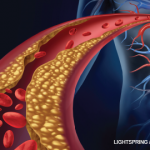For anyone who thought that one nonsteroidal antiinflammatory drug (NSAID) might be less likely to cause cardiovascular (CV) problems than others, data from a recently published network meta-analysis are disconcerting.
“We found a surprisingly large relative risk increase of two to four for myocardial infarction (MI), stroke, and CV death associated with most of these drugs,” says principal investigator Peter Jüni, MD, head of the division of clinical epidemiology and biostatistics at the Institute of Social and Preventive Medicine at the University of Bern in Switzerland. Furthermore, he adds that they are unable at this time to predict which drug will lead to which type of cardiac toxicity.
“It’s not a function just of COX2 inhibition or COX2 selectivity. There are other mechanisms that we don’t—or only partially—understand. Unless we understand these mechanisms entirely, we will be unable to understand what’s going on with specific drugs,” says Dr. Jüni.
The investigators conducted a network meta-analysis to compare large randomized controlled trials (RCTs) that included head-to-head comparisons of two or more NSAIDs, NSAIDs and acetaminophen, and/or NSAIDs and placebo. To meet inclusion criteria, an RCT needed two or more treatment arms with 100 or more patient-years of follow-up.
As explained in the paper and an accompanying editorial, network meta-analysis allows indirect comparisons of interventions.1,2 Once a meta-analysis is performed, the extracted data can be used to make a “chain” of direct comparisons. Even if Drug A has never been compared to placebo in an RCT, a network meta-analysis makes the comparison possible: If Drug A has been compared to Drug B in one RCT, Drug B has been compared to Drug C in another, and Drug C has been compared to placebo, the extracted data can be used in a network meta-analysis to compare Drug A to placebo.
Study Details
The primary study outcome was fatal or nonfatal MI. Secondary outcomes included hemorrhagic or ischemic fatal or nonfatal stroke, CV death, and death from any cause. A total of 31 trials including 116,429 patients with 115,000 patient-years of follow-up were evaluated, and patients had been randomized to naproxen, ibuprofen, diclofenac, celecoxib, etoricoxib, rofecoxib, lumiracoxib, or placebo. Celecoxib was included in the greatest number of trials—15—and compared with five other medications. Ibuprofen was studied in just two trials and was compared to only two other medications. Patient-years of follow-up were greatest for etoricoxib and diclofenac and lowest for ibuprofen.
No evidence was found to link three drugs—naproxen, diclofenac, and etoricoxib—to an elevated MI risk relative to placebo. MI risk appeared to be elevated in association with the other four drugs: ibuprofen (estimated rate ratio 1.61, 95% credibility interval [CI] 0.50-5.77), celecoxib (1.35, 95% CI 0.71-2.72), rofecoxib (2.12, 95% CI 1.26-3.56), and lumiracoxib (2.00, 95% CI 0.71-6.21). In contrast, all seven drugs appeared to be associated with an increased risk of stroke compared with placebo: naproxen (estimated rate ratio 1.76, 95% CI 0.91-3.33), ibuprofen (3.36, 95% CI 1.0-11.6), diclofenac (2.86, 95% CI 1.09-8.36), etoricoxib (2.67, 95% CI 0.82-8.72), and lumiracoxib (2.81, 95% CI 1.05-7.48). With the exception of naproxen, all of the drugs studied apparently increased the risk of cardiovascular death compared with placebo.
Rheumatologists Respond
“These are findings we’ve known about,” says Steven Abramson, MD, professor of pathology and medicine (rheumatology) at NYU Langone Medical Center and the Hospital for Joint Diseases in New York, N.Y. “Potential cardiovascular risk really is imparted by COX2 selective and COX nonselective agents. Ibuprofen is no better than the others in study [prescription] doses,” Dr. Abramson adds.



